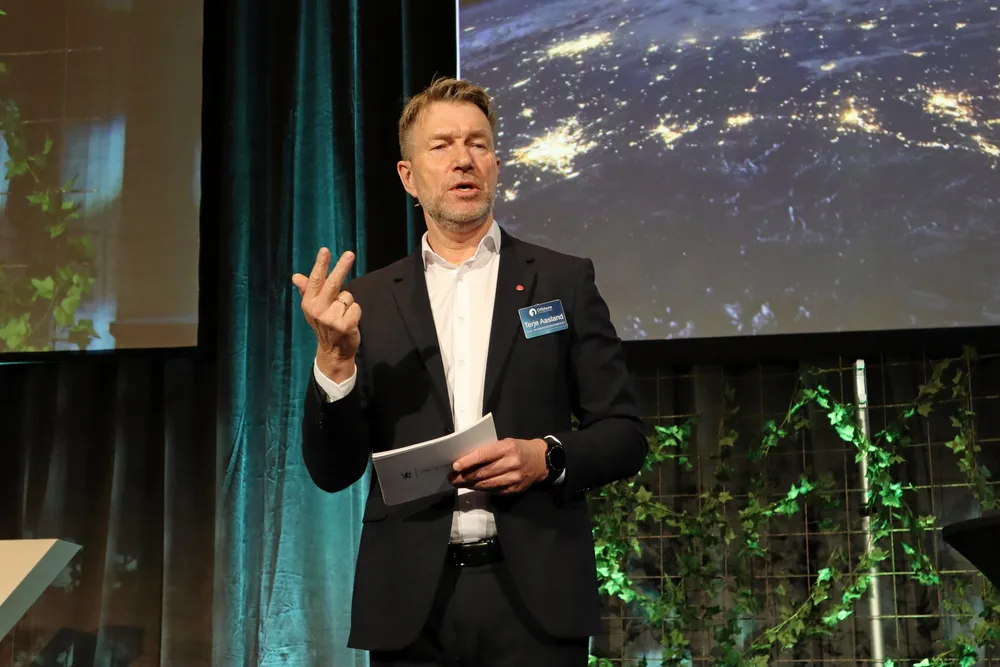Norway scraps fixed-bottom and grid link plans as floating wind prioritised
Government drops plan to tender off gigascale extension to Southern North Sea 2 site and hybrid connectors

Norway’s government due to cost concerns has dropped plans to tender off another bottom-fixed offshore wind site in the North Sea and instead will concentrate on floating wind areas closer to shore.
The country for now will also give up the idea of hybrid grid links that would have connected offshore wind farms in the North Sea both to Norway and other European countries, such as Germany.
Southwest F would have been suitable for about 1GW in capacity, according to Norway’s resources and energy directorate NVE, which had also identified further large sites in the area.
However, a study just published by grid operator Statnett showed that the site more than 150km from the Norwegian coast would be expensive to link to the country, while hybrid grid connections to other countries would be pricey as well.
“We are currently facing high costs, both related to offshore wind production and associated grid solutions,” energy minister Terje Aasland said late on Monday.
“It is clear from the study by Statnett that hybrid cables will not solve these challenges. Offshore wind production will depend on significant government support, regardless of which grid solution we propose.
“The cost level [for hybrid grid links] is high, it is difficult to find profitability in the projects, the regulations at the European level are not in place and in a time of instability in the European power market, I am sceptical of further exposing the Norwegian power system to the power challenges we have seen in Germany and other countries on the continent.”
Floating the priority
Aasland added the government will instead prioritise floating offshore wind projects with grid links only to Norway.
The less mature floating wind technology is still more expensive than bottom-fixed offshore wind, but the floating sites so far identified off Norway’s coast are much closer to shore, reducing grid link costs.
Although floating wind in general is more expensive, the government still sees great potential for the technology in Norway as most of the country’s sea areas are very deep and the Norwegian industry will be able to draw from 50 years of experience from the domestic oil and gas sector.
“Norway is pioneering floating technology and innovation, and we have nature-given advantages such as deep waters and fjords.”
The government does not rule out that offshore wind with hybrid solutions may become relevant in the future if the situation and cost picture change, the energy ministry added.
By the summer, the NVE also is slated to present a wider strategic impact assessment of areas that may be suitable for offshore wind, which will form the basis for future tenders. Based on that assessment, the government also plans to tell in more detail how it intends to reach its target of 30GW of offshore wind by 2040.
The industry has complained that so far there is only a target, but no interim steps and little visibility on how that goal will be reached in practice.
“The industry has challenged the government to put forward a clear timeline for future tenders, containing capacity per leasing round,” Nesse said.
“We hope they will keep their promise to do so this summer, and we are happy to see that 70% of the areas in question are suitable for floating.”
"Self-sabotage"
The scrapping of the Southwest F auction was questioned in Norwegian media and politics.
"Now it is important to see this in the context of other areas that will have completed their impact assessment in June this year, see where we get the most for our money," Bergmål is quoted as saying.
"And then it is clear that Norway has the greatest potential and where it is particularly wise to invest for Norway."
The Norwegian Green Party (MDG) said it will fight the decision to scrap the Southwest F area in parliament.
"They have had several years to prepare Sørvest F for announcement and further development, but still have not managed to get this done this year. What have they spent their time on?"